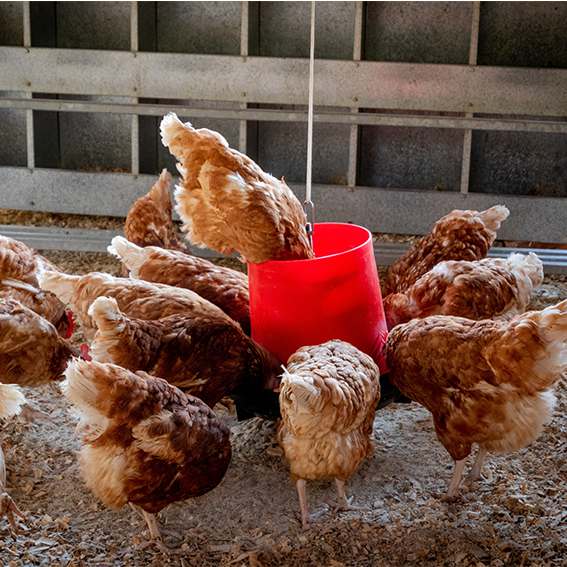
USING APETENZYMA® 2923 TO INCREASE FEED INTAKE IN A SPANISH COMMERCIAL LAYER FARM
This trial was presented during the International Poultry Scientific Forum (IPSF) celebrated last January. Feed intake in layers can be influenced by many factors; heat stress, diet composition, production stage, etc., and producers often struggle to reach the consumption levels that geneticists recommend. Not reaching the suggested consumption might stop layers from hitting their genetic potential. The use of aromas is one of the latest strategies, despite the extended belief that birds are anosmic. The objective of this field trial was to determine if an aroma was able to increase the feed consumption and egg production of layers raised under commercial conditions in Spain. A total of 15,000 37-week-old Hy-Line Brown layers were used for this trial, in a single group. The recommended intake for this breed and age is 108-114 g/d/bird. An on/off experimental design was employed to avoid disrupting the normal-functioning of the farm. The trial lasted a total of 6 weeks, 3 UNFLAVORED (usual feed) week-long periods and 3 FLAVORED (usual feed + Apetenzyma® 2923 (250g/t)) week-long periods, distributed alternatively. Feed intake was calculated for each period, data related to daily egg production (total production, egg weight, broken eggs) was recorded daily. Egg weight was classified in 5 categories: XXL (˃83g), XL (73-83g), L (63-73g), M (53-63g), S (<53g). Data were analyzed by one-way ANOVA using the GLM procedure of SAS 9.0. Results showed that the average daily feed intake was significantly higher (P<0.001) during the FLAVORED periods (110.77 g/d/bird vs 105.15 g/d/bird UNFLAVORED). No significant differences were observed in total egg production or broken eggs ratio. However, layers showed a tendency (P=0.055) of producing more XXL weight eggs (169 eggs/day vs 158 eggs/day) during the FLAVORED periods. This finding can be explained by the extra intake achieved when FLAVORED diet was offered. These data go in line with some recent studies demonstrating that layers can perceive certain smells. Additionally, the 5.34% increased intake suggest that adding aromas to layers’ feeds could be a potential solution when feed consumption is challenged. Further studies must be carried out under different commercial conditions to understand the extent of the aroma’s effect.

